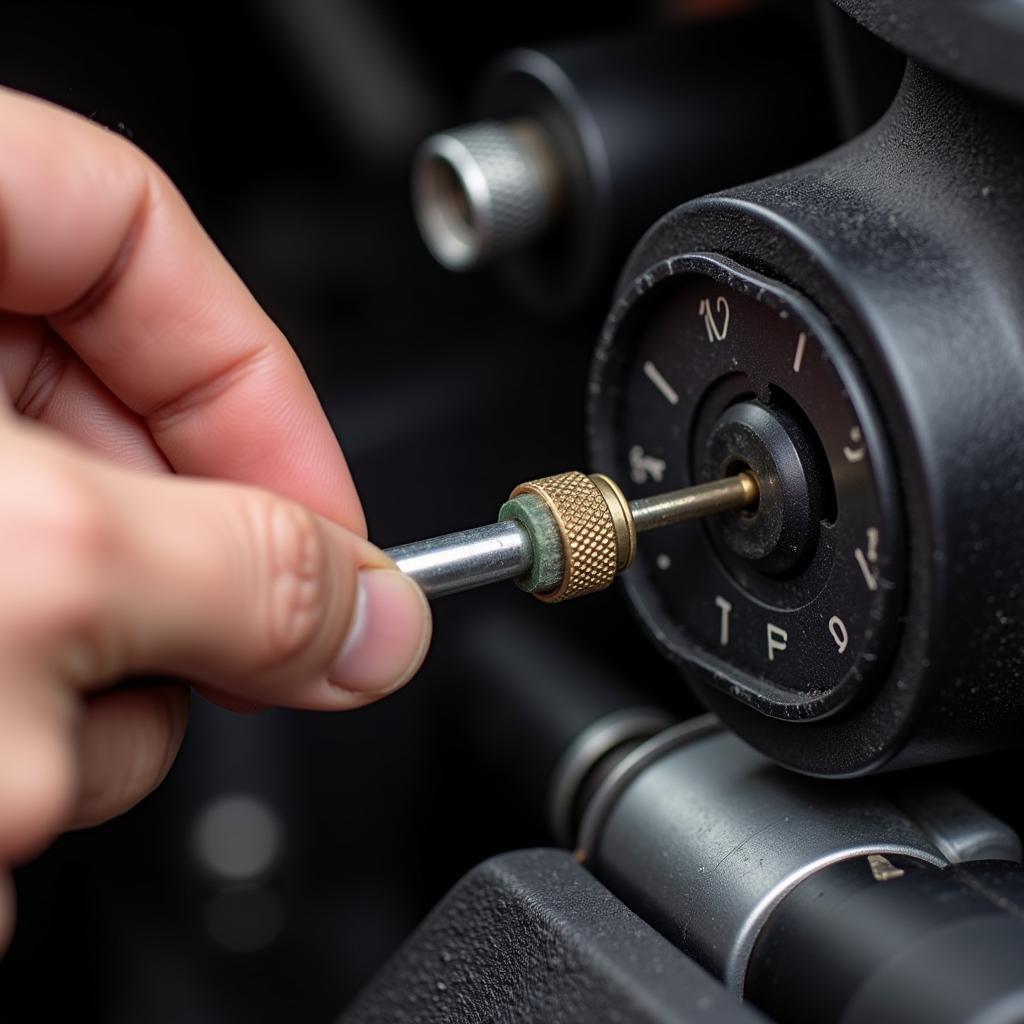A flashing or constantly illuminated anti-theft light on your dashboard can be an annoying surprise. But don’t panic! This light is your car’s way of telling you something might be wrong with its security system. Let’s dive into the common reasons why this light might be activated and how you can troubleshoot the issue.
Understanding the Anti-Theft System
Your car’s anti-theft system is designed to deter theft. It typically consists of components like an engine immobilizer, alarm system, and sensors that monitor doors, hood, and trunk for unauthorized entry. When the system detects a potential threat, it activates the warning light and might even prevent the engine from starting.
Common Reasons Your Anti-Theft Light is On
Several factors can trigger the anti-theft light. Here are some of the most common culprits:
1. Weak Car Battery
A weak or dying battery is a frequent offender. The anti-theft system needs a stable power supply to function correctly.
How to identify: If your car struggles to start or you notice dimming lights, a weak battery could be the root cause.
2. Faulty Key Fob Battery
Your key fob’s battery powers the signal that communicates with your car’s anti-theft system. If the battery is weak, the system might not recognize the signal, triggering the warning light.
How to identify: Try using the spare key fob. If the light goes off or the car starts with the spare, a dead key fob battery is the likely issue.
3. Malfunctioning Key Fob
Beyond just the battery, the key fob itself can malfunction. Damaged internal components or a broken circuit board can disrupt the signal transmission.
How to identify: Like a weak battery, a faulty key fob will often present itself when using the key to unlock the doors or start the vehicle.
4. Faulty Ignition Switch
The ignition switch plays a critical role in both starting your vehicle and disengaging the anti-theft system. A worn-out or malfunctioning ignition switch can disrupt the process, causing the anti-theft light to illuminate.
How to identify: If you experience difficulty starting your car, the key getting stuck in the ignition, or other electrical issues, a faulty ignition switch might be to blame.
5. Damaged Wiring or Connectors
Exposure to moisture, corrosion, or physical damage can affect the wiring and connectors within the anti-theft system, interrupting the flow of information.
How to identify: Look for visible signs of damage, loose connections, or corrosion around the battery, ignition switch, and other related components.
6. Faulty Sensors
The sensors that monitor your car’s doors, hood, and trunk can malfunction, sending false signals to the anti-theft system.
How to identify: Check if any doors, the hood, or the trunk are not closing properly or if the interior lights stay on even when the doors are closed.
What to Do When Your Anti-Theft Light is On
Here’s a step-by-step guide on how to troubleshoot the issue:
-
Check the Basics: Start by checking the obvious – ensure your car battery is charged, try a different key fob if available, and make sure all doors, hood, and trunk are securely closed.
-
Jump Start Your Car: If you suspect a weak battery, jump-start your car. This can often reset the anti-theft system. However, if the light stays on even after the jump start, there might be a deeper issue.
-
Consult Your Owner’s Manual: Refer to your car’s owner’s manual for specific instructions and troubleshooting tips related to your vehicle’s make and model.
-
Use an OBD-II Scanner: An OBD-II scanner can be incredibly helpful. This device plugs into your car’s diagnostic port and reads error codes stored in the system. These codes provide valuable insights into the root cause of the issue. For advanced diagnostics and solutions, consider utilizing professional diagnostic and programming services offered by companies like Cardiagtech.
-
Seek Professional Help: If the problem persists after trying these steps, it’s best to seek help from a qualified mechanic or an automotive locksmith who specializes in anti-theft systems.
Frequently Asked Questions
Q: Can I drive my car with the anti-theft light on?
A: It depends. If the light is flashing, it’s a warning and you can likely still drive your car. However, if the light is solid, it might mean the system is engaged and preventing the engine from starting.
Q: How much does it cost to fix an anti-theft system problem?
A: The cost can vary greatly depending on the specific issue, the make and model of your vehicle, and labor costs in your area. A simple battery replacement might only cost a few dollars, while replacing a faulty sensor or control module can cost significantly more.
Q: Can I disable the anti-theft system myself?
A: While it’s technically possible to disable some anti-theft systems, it’s generally not recommended unless you have the necessary expertise. Tampering with the system can lead to further problems and might even void your car’s warranty. You can learn more about disabling car anti-theft systems from our other resources, like this one on how to disable anti-theft system on 1994 Ford Explorer.
Conclusion
Dealing with a stubborn anti-theft light can be frustrating, but by following these troubleshooting steps, you can often identify and resolve the issue. Remember, if you’re unsure about any step or the problem persists, don’t hesitate to reach out to a professional mechanic or an automotive locksmith experienced in dealing with car anti-theft systems. CARDIAGTECH can connect you with expert advice, diagnostic tools, and solutions tailored to your vehicle’s specific needs.

